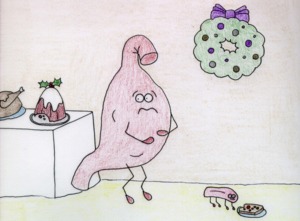What Is ‘Food Poisoning’?

Artist credit: Hilari Kleine Jones via Flickr
You may often see the term ‘food poisoning’ and think of gastrointestinal distress like nausea and diarrhea. But this is a fairly broad term and can include such things as actual poisoning, such as the food being contaminated with a toxic substance. As a biohazard cleanup and remediation company, we deal with a more specific type: food-borne illnesses. And it’s very important to make the distinction. Food-borne illnesses can be passed along to others, while toxic substances contaminating a particular food source generally do not.
First, let’s define our terms. ‘Biohazard’ refers to a biological organism or substance that can negatively affect living beings, especially humans but also animals. Examples of biohazards are fungi, bacteria, and viruses. Also included are spores such as molds and toxins that are byproducts of these microorganisms.
A food-borne illness is one that’s transmitted via consumption of (or at times even handling) of food or drink that is contaminated by a biohazard. You are likely familiar with such microorganisms as salmonella, listeria, and e.coli. These are the most common ones, but there are others, including hepatitis A. You may be most familiar with these due to recall notices on food items or news articles on outbreaks related to a specific restaurant or other food source. We often publish food recall notices on our Facebook page. If you’re not already following us there, please do!
This particular biohazard category is one that affects our business. From time to time a business such as a restaurant or other facility that’s had an issue with microorganisms being transmitted via their food products will contact us to have their location thoroughly cleaned, disinfected, and sanitized. For most facilities that have had this issue, the Health Department may require such cleaning in order to reopen.
If you own a facility that’s been affected by a food-borne illness and you need cleanup assistance, please contact us. We serve various locations in the Pacific Northwest such as Spokane, Seattle, and other communities in Washington, Oregon, and Idaho.
{Note: This article is the first in our series on food-borne illnesses. Follow our blog for upcoming posts on the most common sources, how these microorganisms are transmitted, common side effects, and effective means of cleanup as well as prevention.}



